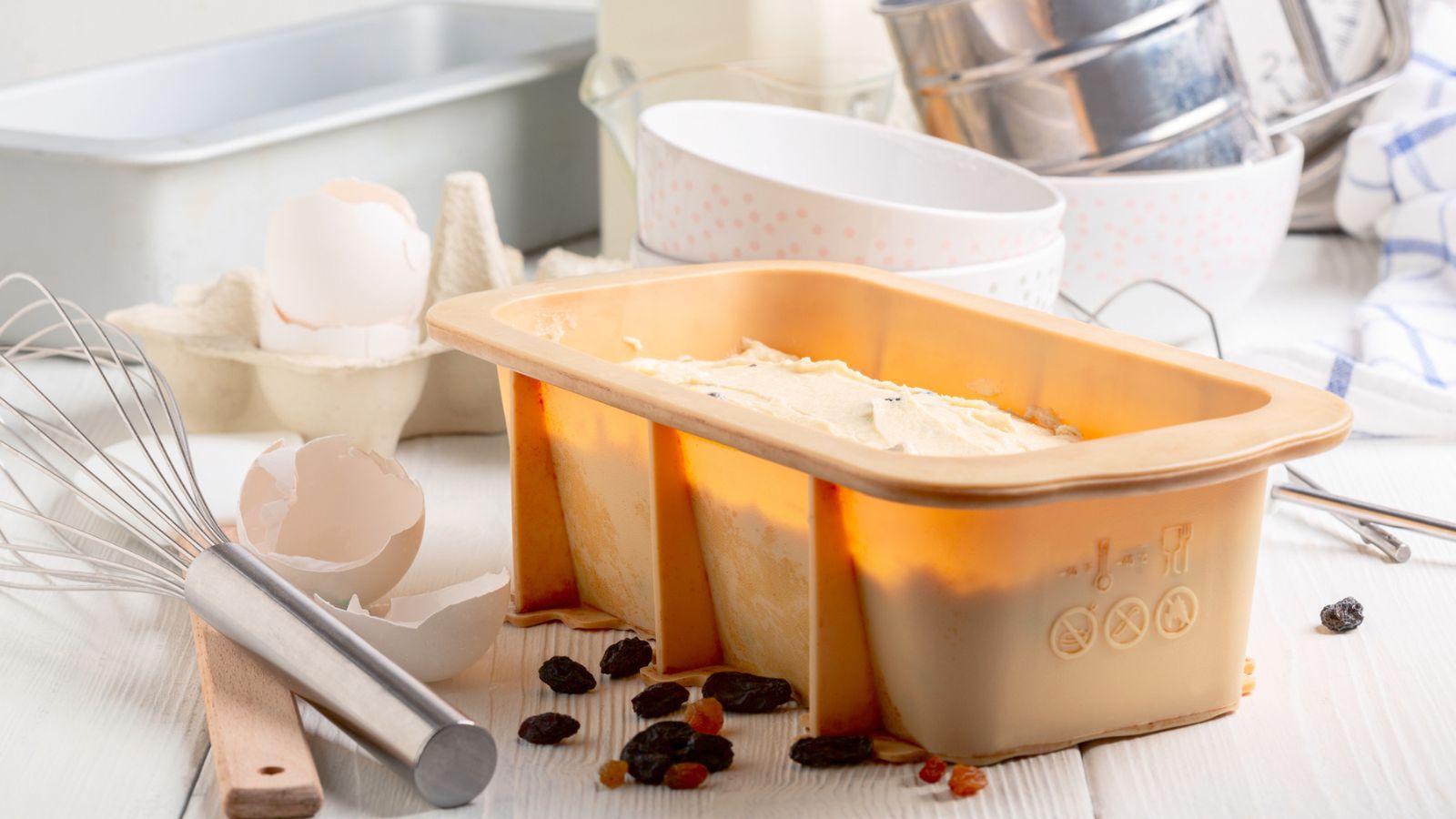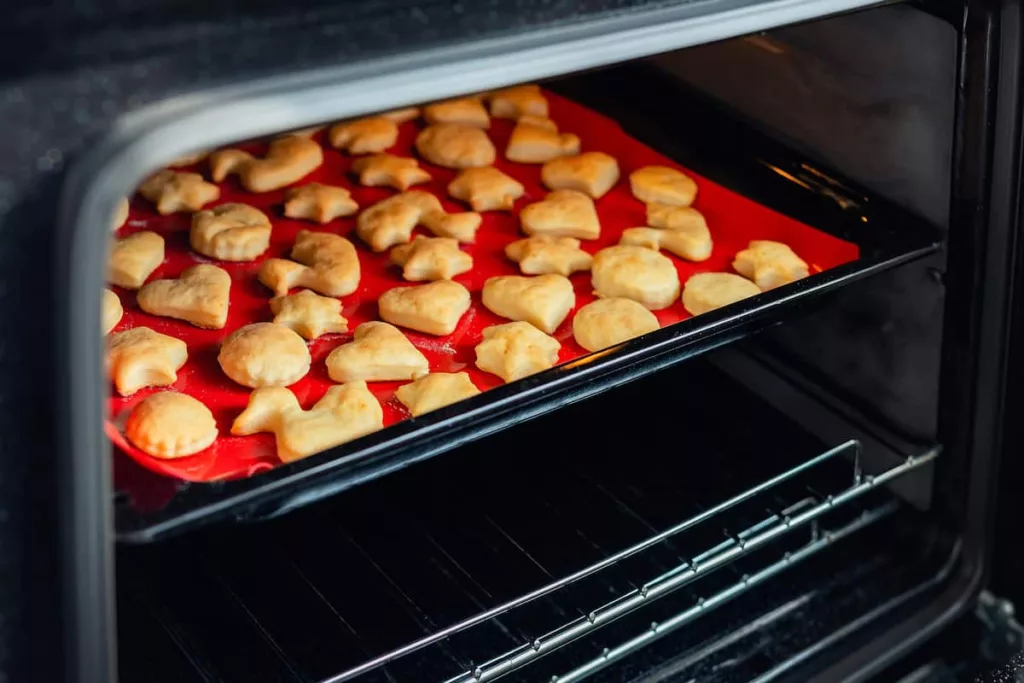Yes, silicone can go in the microwave. It’s safe for heating food.
Silicone is heat-resistant and flexible, making it perfect for microwave use. Microwaving food is a common practice, and silicone kitchenware has gained popularity for its durability and ease of use. People often wonder if silicone can withstand microwave heat without damage.
Understanding the properties of silicone helps. It’s made from bonded silicon and oxygen, giving it unique stability under heat. This makes silicone ideal for baking and cooking, including microwave applications. Many kitchen tools like spatulas, molds, and lids are crafted from silicone, offering convenience and versatility. Knowing its capabilities and limitations ensures safe and effective use. This guide explores silicone’s compatibility with microwaves, ensuring your culinary adventures are safe and satisfying.
Silicone And Heat
Silicone is a versatile material used in kitchens worldwide. It’s known for its durability and flexibility, making it a popular choice for cookware. One common question is whether silicone can safely go in the microwave. Understanding the relationship between silicone and heat is crucial. This section explores how silicone reacts to heat, especially in microwave settings.
Properties Of Silicone
Silicone is a synthetic polymer with unique properties. It is flexible, durable, and resistant to chemicals. This material is non-toxic, making it suitable for food contact. It withstands environmental changes without degrading. Silicone is also known for its thermal stability. This means it can endure high temperatures without melting. Its ability to maintain shape under heat makes it ideal for kitchen use.
Heat Resistance Levels
Silicone’s heat resistance is impressive. It can handle temperatures up to 428°F (220°C). This makes it safe for baking and cooking. In the microwave, silicone performs well because it doesn’t absorb heat quickly. It remains cool to the touch after short heating periods. This property ensures it won’t warp or melt easily. It’s crucial to check the manufacturer’s guidelines for specific heat limits. Not all silicone products have the same tolerance levels.

Credit: www.homesandgardens.com
Safety Of Silicone In Microwaves
When it comes to using silicone in the microwave, safety is a top concern. You might be wondering if your silicone baking mats or containers are safe to use. Let’s dive into the specifics of how silicone behaves under microwave conditions.
Chemical Stability
Silicone is known for its chemical stability. It doesn’t react with food or liquids, which makes it a popular choice for kitchenware. This means that when you microwave silicone, it won’t break down or release harmful chemicals.
Next time you’re heating leftovers, you don’t have to worry about any unwanted reactions. Silicone remains stable, making it a reliable partner in your culinary adventures. But have you ever wondered why it feels so different from plastic?
Potential Hazards
While silicone is generally safe in microwaves, there are a few potential hazards to consider. If your silicone container has metallic paint or decorations, it can cause sparks. Always check for any metallic components before microwaving.
Another point to consider is the condition of your silicone items. Older or damaged silicone may not withstand the heat as well. If you notice cracks or changes in texture, it might be time for a replacement. How often do you inspect your kitchen tools for wear and tear?
Using silicone in the microwave can be safe, but caution is key. By understanding its properties and limitations, you ensure your kitchen remains a safe space for all your culinary creations. What are your thoughts on using silicone in everyday cooking?
Types Of Silicone Products
Silicone products have become popular in many homes. Their heat resistance and flexibility make them ideal for various uses. But what types of silicone products can go in the microwave? Let’s explore the different categories of silicone items found in households.
Kitchenware Items
Silicone kitchenware is common in many households. These items include baking mats, spatulas, and molds. They can handle high temperatures without melting. Silicone baking mats make baking easier. They prevent food from sticking to the tray. Spatulas made from silicone are flexible. They make stirring and scraping simple. Silicone molds come in fun shapes. They are perfect for baking cupcakes or making ice cubes.
Other Household Uses
Silicone is not just for the kitchen. It has many uses around the house. Some people use silicone lids. They fit snugly on bowls and keep food fresh. There are also silicone trivets. They protect tables from hot dishes. Silicone rings are used in pressure cookers. They ensure a tight seal and safe cooking. Even some phone cases are made of silicone. They protect your phone from damage.
Testing Silicone In Microwaves
Silicone cookware is popular for its flexibility and durability. Many wonder if it’s safe to use in microwaves. Testing silicone in microwaves helps clear doubts and ensures safety. Let’s explore what research and real-life experiments reveal.
Scientific Studies
Researchers have tested silicone under various conditions. They study its behavior in microwaves. Scientific studies show silicone can withstand microwave heat. It remains stable and doesn’t release harmful chemicals. Its thermal properties make it ideal for microwave use.
Some studies focus on silicone’s melting point. They find it to be high, above typical microwave temperatures. This ensures silicone won’t melt during regular use. The material’s elasticity and non-reactive nature contribute to its microwave safety.
Real-life Experiments
Home cooks often conduct their own tests. They use silicone containers in microwaves to see results. Many report silicone handles microwave heat well. It doesn’t warp or change shape. Users find it convenient for reheating leftovers.
People share experiences online. They praise silicone for its practicality. Some mention its ease of cleaning after microwave use. Real-life experiments show silicone remains odor-free and stain-resistant. This makes it a preferred choice for kitchen tasks.
Pros Of Using Silicone
Silicone cookware has become popular in modern kitchens. Its benefits make it a preferred choice for many. Understanding the advantages of silicone helps make informed decisions.
Durability
Silicone is known for its strong and flexible nature. It can withstand high temperatures without losing shape. This makes it ideal for microwave use. Silicone products often last longer than plastic or glass. They resist wear and tear, giving you value for your money.
Ease Of Cleaning
Cleaning silicone is simple and quick. Its non-stick surface prevents food from clinging. This feature makes washing easy, reducing time spent on chores. Silicone can be placed in the dishwasher without damage. Enjoy more time cooking and less time cleaning.

Credit: wiser.eco
Cons Of Using Silicone
Using silicone in the microwave can have downsides. It might not distribute heat evenly, leading to uneven cooking. Some silicone products may release chemicals when overheated, potentially affecting food safety.
Silicone kitchenware is all the rage these days, mainly because of its flexibility and durability. However, it’s not all sunshine and rainbows. While silicone might seem like a miracle material, there are some downsides to consider before you pop it into your microwave.Potential Health Concerns
You might wonder if microwaving silicone could affect your health. Silicone is generally considered safe, but not all products are created equal. Some cheaper silicone items might contain fillers that can leach harmful substances into your food when heated. It’s crucial to ensure that your silicone kitchenware is food-grade and free from fillers. Reading labels and doing a bit of research can save you a lot of trouble. Would you feel comfortable heating food in something that might not be 100% safe?Environmental Impact
Silicone boasts durability, which is great for your kitchen, but what about the planet? Unlike biodegradable materials, silicone takes hundreds of years to break down in landfills. Its long life cycle can contribute to environmental pollution. While silicone is reusable and reduces the need for disposable products, it’s not perfect. Recycling silicone is possible but not as straightforward as recycling glass or plastic. Are you willing to compromise on environmental concerns for convenience in your kitchen? The cons of using silicone aren’t glaringly obvious at first glance. But, when you start to peel back the layers, there’s more than meets the eye. Balancing convenience with health and environmental considerations is key. So, next time you reach for that colorful silicone spatula, think about the bigger picture. What trade-offs are you willing to make for that quick microwave fix?Silicone Versus Other Materials
Silicone, known for its heat resistance, can safely go in the microwave. Unlike plastic, it doesn’t release harmful chemicals. Its flexibility and durability make it a preferred choice over glass or metal for microwave use.
Silicone has gained popularity in kitchens worldwide. Its flexibility and heat resistance make it a favorite. But how does it compare with other materials? Understanding this helps in making informed choices. Let’s explore how silicone stacks up against plastic, glass, and ceramic.Plastic Comparison
Silicone is more heat-resistant than plastic. It can withstand temperatures up to 428°F (220°C). In the microwave, silicone remains stable and doesn’t release harmful chemicals. Plastic, on the other hand, can melt or warp. Some plastics may leach chemicals when heated. This makes silicone a safer choice for microwave use. It also lasts longer than most plastics, resisting scratches and stains.Glass And Ceramic Alternatives
Glass and ceramic are traditional microwave-safe materials. They don’t release toxins when heated. Yet, they can be heavy and break easily. Silicone offers a lightweight and shatterproof alternative. It’s flexible, making storage easier. Unlike ceramic, silicone doesn’t chip. Unlike glass, it doesn’t crack under pressure. This makes silicone practical for everyday use. It’s also non-stick, simplifying the cleaning process.
Credit: theecohub.com
Conclusion On Microwave Use
Silicone kitchenware is popular due to its flexibility and heat resistance. Many wonder about its safety in the microwave. Understanding how silicone interacts with microwaves can prevent accidents. Let’s explore the conclusions and safety tips.
Final Safety Recommendations
Silicone products are generally microwave-safe. Always check the manufacturer’s label for specifics. Ensure the silicone is food-grade. Avoid using silicone with metal components. Metal can cause sparks in microwaves. Inspect silicone for any damage. Damaged silicone may not be heat-resistant.
Future Considerations
New silicone products continue to emerge. Stay informed about their microwave compatibility. Technological advances may introduce new materials. These may offer better safety features. Always research before using new silicone products. Manufacturers may provide updated guidelines. Follow these to ensure safe microwave use.
Conclusion
Silicone can safely go in the microwave. Most silicone products are heat resistant. Always check the manufacturer’s guidelines. This ensures your silicone item remains undamaged. Microwave use is convenient for quick heating. Silicone saves time and effort in the kitchen.
It’s easy to clean and maintain. Silicone does not retain food odors or stains. This makes it a popular choice for many. Remember to avoid sharp objects on silicone. They can cause tears or damage. Use silicone wisely for efficient cooking.
Enjoy safe and easy microwave use with silicone.
I’m Robert M. Payne, a passionate enthusiast for turning houses into dream homes. With a knack for DIY projects and a keen eye for design, I’ve dedicated myself to sharing my knowledge and experiences in the realm of home improvement.
As a seasoned homeowner and avid DIYer, I understand the challenges and joys that come with transforming living spaces. Through Myhomemyworld, I aim to inspire and guide fellow homeowners on their journey to creating spaces that reflect both functionality and style.
Cheers to creating spaces that truly feel like home.
Connect with me in facebook
